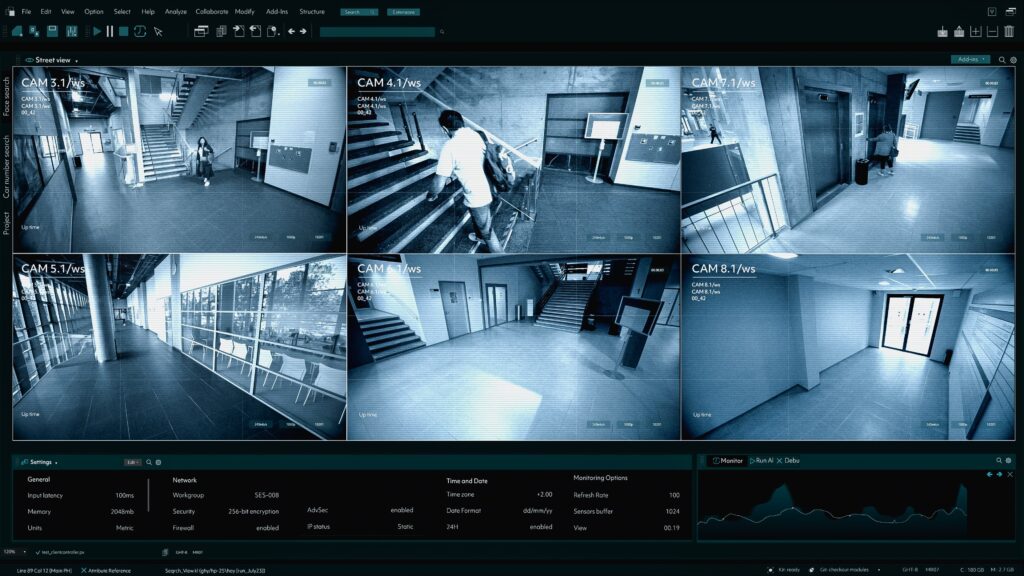- July 11, 2025
While the property owner’s insurance company may seem helpful at first, its primary goal is often to protect its client and its own bottom line. They will look for reasons to deny your claim or argue that you were at fault.
To succeed, you must do more than just show that you fell and were injured. You must prove the property owner was legally responsible, or liable, for the conditions that led to your injury. This requires strong, specific proof.
This article explains what evidence is needed to prove liability in a slip and fall case.
The Legal Foundation of a Slip and Fall Claim
A slip and fall case is a type of personal injury claim based on the legal concept of negligence. Simply falling on another person’s property does not automatically make the owner responsible for your injuries.
You must show that the property owner was careless in keeping the premises reasonably safe for visitors. This carelessness, or negligence, is the core of your claim and what you must prove with solid evidence.
To successfully prove negligence, your evidence must support three specific points. Each point builds on the last, creating a complete picture for an insurance company or a jury.
- A Duty of Care Existed: You must first show the property owner owed you a legal duty to maintain a safe environment. This is usually straightforward, as businesses that invite the public onto their premises automatically have this duty to their customers and other lawful visitors.
- The Duty Was Breached: Next, you need evidence showing the property owner failed in this duty. This means proving a dangerous condition existed and the owner did not act as a reasonable person would to remedy the situation.
- The Breach Caused Your Injuries: Finally, you must link the owner’s failure directly to your fall and subsequent injuries. Evidence must show that because they failed to clean the spill or fix the broken step, you fell and suffered harm, resulting in medical bills, lost income, and other losses.
Proving the Property Owner's Knowledge of the Hazard

One of the most challenging parts of a slip and fall case is proving that the property owner knew or should have known about the dangerous condition. This legal requirement is called "notice."
An owner cannot be held liable for a hazard they had no opportunity to discover. For instance, if another customer drops a jar of mayonnaise and you slip on it seconds later, the owner likely did not have enough time to find and clean the spill.
Your evidence must show that the owner had notice of the problem.
You can prove two types of notice. The first is "actual notice," which means the owner or their employees were directly aware of the specific hazard. This could be because another customer reported it or an employee saw it themselves.
The second is "constructive notice," an indirect form of knowledge. Constructive notice means the dangerous condition existed for such a long period of time that a reasonably careful property owner should have discovered it during routine inspections.
Actual Notice
Evidence of actual notice directly proves the owner knew about the problem. This is the strongest type of notice you can establish. It removes any argument that the owner was unaware of the danger.
Evidence includes security footage showing an employee walking past a spill without cleaning it or witness testimony from someone who reported the hazard to a staff member before your fall.
Constructive Notice
You can use evidence to establish constructive notice when you cannot prove actual notice. The goal is to show the hazard was not a recent occurrence. You can use photographs of the hazard that indicate its age, such as melted ice, dirty water, or dust collected on a fallen object. You might also rely on witness statements from people who were in the area for some time before your accident and can testify about how long the hazard was present.
Recurring or Foreseeable Problems
Sometimes, a hazard is part of an ongoing problem. If a roof consistently leaks every time it rains or an entryway rug always bunches up, the owner has notice that a dangerous condition is likely to occur.
Evidence of prior complaints, maintenance logs, or repair records can show the owner was aware of a recurring issue. This makes the danger foreseeable, and their failure to implement a permanent fix can be used to establish negligence.
Official Documents and Reports that Build Your Case
While photos and witness statements from the scene are very persuasive, official documents can provide an objective, authoritative layer to your claim. These records are often created by third parties or the business itself and can be difficult for an insurance company to dispute.
These documents help formalize your account of the incident and can reveal important information about the property owner's safety protocols, or lack thereof.
The most immediate document is the incident report filed with the business. This report creates a formal record of your fall, noting the date, time, and location.
It is an acknowledgment by the business that an event occurred. Beyond this initial report, other official records can be obtained. In some cases, records from a local government agency can show that the property was not in compliance with building codes, which can be powerful evidence of negligence.
Gathering these documents is key to building a strong foundation for your claim.
- The Store or Business Incident Report: After reporting your fall, you should request a copy of the incident report. This document confirms the time and place of the accident. Review it carefully to make sure the facts are accurate.
- Police or Ambulance Reports: If you or someone else called 911, there will be an official record. An ambulance report will detail your initial medical complaints and condition at the scene. A police report might contain observations from the officer about the conditions of the property.
- Building Code Violation Records: Your lawyer can check with the local municipality to see if the property where you fell has a history of building code violations. A broken handrail or improperly spaced stairs that violate a code is very strong proof of negligence.
- Internal Company Memos or Emails: Through the legal discovery process, your attorney can request internal documents from the property owner. These might include emails between managers about a known safety issue, maintenance schedules, or sweep logs that show when floors were last inspected.
Using Video Surveillance Footage to Your Advantage

A video can provide an unbiased, real-time account of what happened. It can show the hazardous condition, how long it was before your fall, and the fall itself.
The main challenge with video evidence is getting it before it is destroyed.
Most businesses record their surveillance footage on a loop, often every 24 hours to a few weeks. They are not legally required to save this footage for you unless they receive a formal request from an attorney.
An experienced slip and fall lawyer can send what is known as a "spoliation letter" to the property owner, which legally demands that they maintain all video recordings and other evidence related to your accident.
Securing and using video footage involves a clear, time-sensitive process.
- Identify Potential Cameras: As soon as possible, note any visible security cameras in the area where you fell. Look for cameras near entrances, aisles, parking lots, or common areas.
- Send a Preservation Letter: An attorney must immediately send a formal letter to the property owner demanding they save all footage from the date of the incident. This letter prevents them from legally destroying the evidence. If they destroy it after receiving the letter, they can face legal sanctions.
- Legal Action to Obtain Footage: A business might refuse to voluntarily hand over the video even after a preservation letter is sent. At this point, your attorney can file a lawsuit and use legal tools like subpoenas to compel the business to produce the footage for your case.
Witness Testimony: The Human Element of Your Claim
While physical evidence like photos and documents is essential, the human element provided by witness testimony can be just as powerful. A person who can tell a jury what they saw can make your claim more relatable and believable.
Witnesses can confirm key facts, such as the existence of the hazard, how long it was there, and the circumstances of your fall. Their statements corroborate your version of events and counter the property owner’s attempts to shift the blame.
Eyewitnesses to the Fall
An individual who saw the accident happen can provide a direct account of the event. They can confirm where you were walking, what you slipped on, and how you fell.
Witnesses to the Hazard
This category includes anyone who can testify about the dangerous condition itself. It could be another customer, a delivery person, or even one of the property owner’s own employees.
An employee who admits the leaky freezer had been reported a week ago but was never fixed provides direct proof of actual notice. A customer who says they had to walk around a large spill in an aisle can help establish how long the hazard existed.
Character Witnesses
In some situations, a character witness can be helpful. If the defense tries to argue that your injuries were pre-existing, a friend, neighbor, or coworker can testify about your physical condition and active lifestyle before the accident.
This person can describe your previous activities and how your life has changed since the fall, helping to demonstrate the full extent of your damages.
Demonstrating Your Injuries and Financial Losses

Proving the property owner’s fault is only the first part of a successful claim. You must also present clear evidence of your injuries and the financial and personal losses you have suffered because of them.
These losses are called "damages." The insurance company for the property owner will closely examine your medical history and bills, looking for any opportunity to argue that your injuries are not as severe as you claim or were caused by something other than the fall.
To counter these tactics, you must maintain meticulous records of everything related to your injuries and recovery. Every medical appointment, prescription, and therapy session should be documented.
Keep a file with all related bills and receipts. Documenting how the injuries have affected your daily life is also mandatory. Proving your damages requires showing not just what you have lost financially, but also how your quality of life has diminished.
This complete picture ensures you can seek fair compensation for all you have endured. Your evidence of damages should be thorough and organized.
- Medical Records and Bills: This is the most important evidence of your injuries. It includes everything from initial emergency room records to reports from surgeons, physical therapists, and other specialists. The bills show the financial cost of your medical care.
- Proof of Lost Wages: If your injuries prevented you from working, gather pay stubs, W-2 forms, and a letter from your employer detailing your job title, rate of pay, and the dates you were unable to work. This proves the income you lost.
- Photos of Your Injuries: Take photos of any visible injuries, like bruises, cuts, or casts, throughout your recovery process. These images provide a visual record of your physical suffering.
Start Your Legal Journey with a Trusted Advocate
The attorneys at Goodman Acker PC help people across Michigan stand up to insurance companies and property owners who put profits ahead of safety. If you were hurt in a fall, we can help you gather the proof needed to secure the compensation you deserve. Please call (248) 831-1507 for a free, no-obligation consultation.

